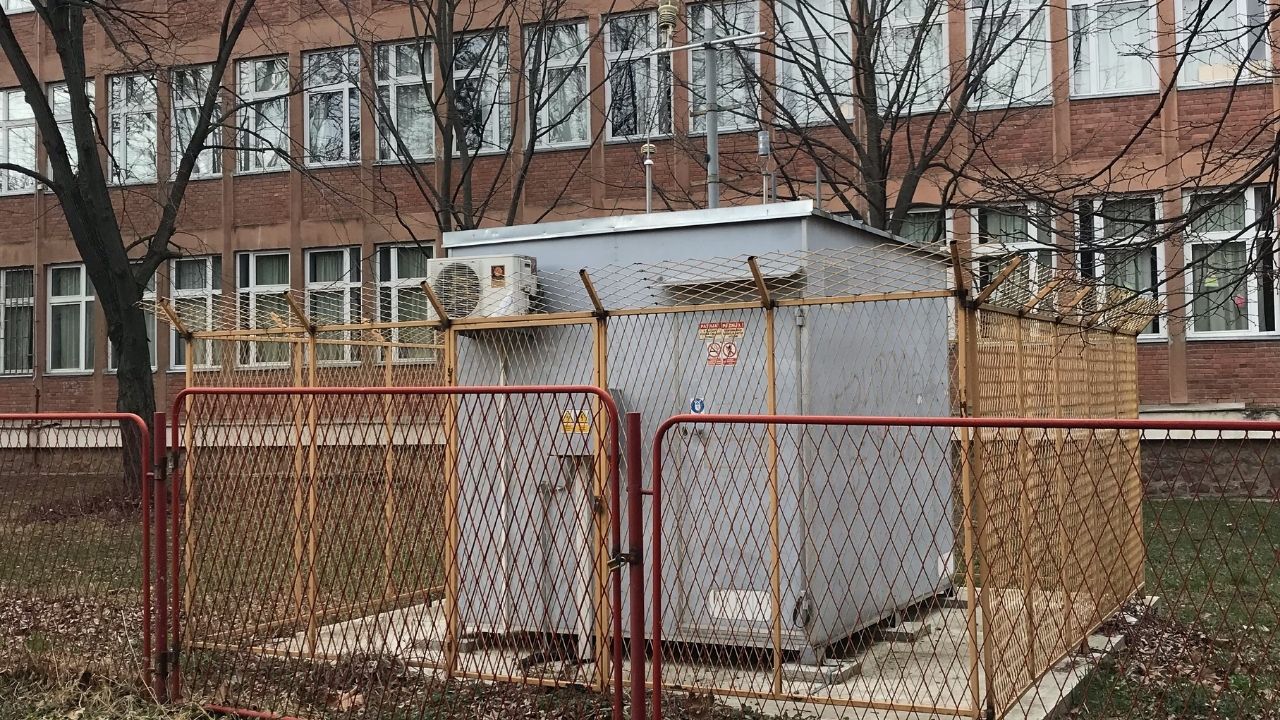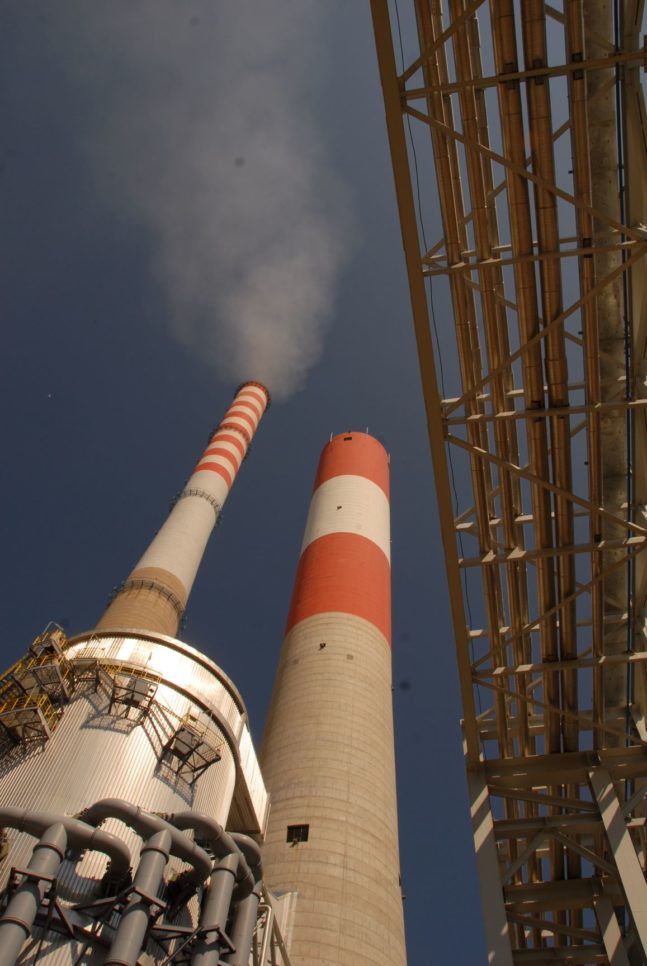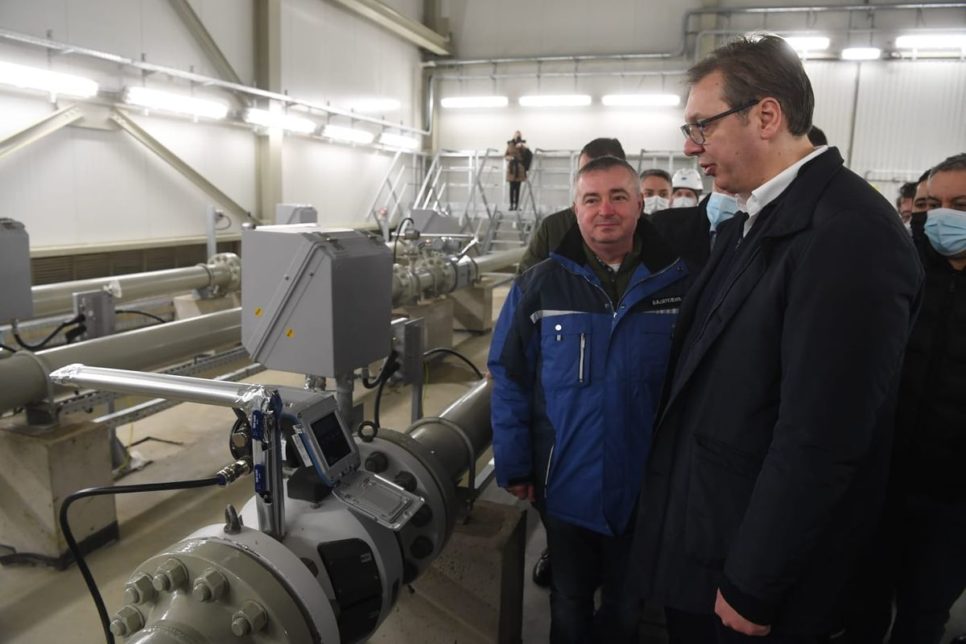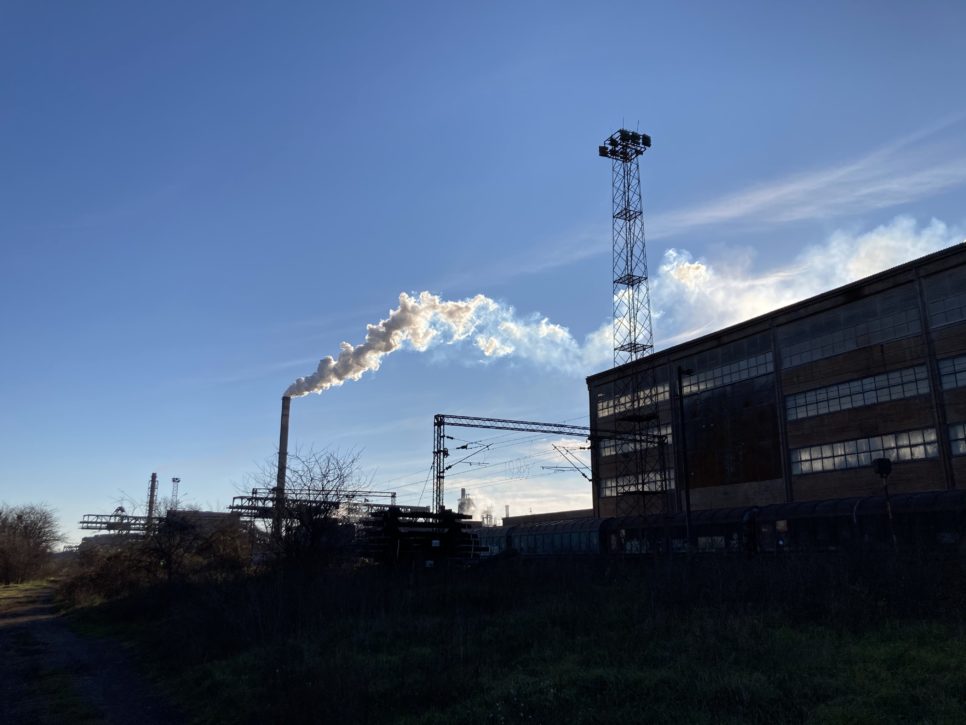Just about 50 meters away from the Lafarge cement factory gates is Beočin’s Kolonije settlement. Its inhabitants, including children, live in densely populated houses packed into narrow streets. The Šljivik settlement is located right next to it, and wherever you stand the factory chimneys can serve as orientation points.
According to official reports, the cement plant was among the main air polluters in Serbia in 2019. However, the plan has had a negative impact on air for decades now. Back in 2006, the Detailed Regulation Plan of the factory complex stated that the quality of the environment in Beočin had largely been reduced due to the operation of the cement plant, its unfavorable position relative to the settlement and to the direction of the dominant wind. There were plans for the relocation of inhabitants of Kolonije and Šljivik, but those plans were dropped in the years that followed. On the contrary, there is now a plan for the expansion of Kolonije. Furthermore, a planned protective belt between the factory and the town was never built. An announcement on the Municipality of Beočin website says that the kindergarten will be moved onto factory grounds, too.
Most of the townspeople the journalist of the Center for Investigative Journalism of Serbia (CINS) talked with did not wish to speak under their full name, saying that there was a lot of pressure in a small community and that they or their loved ones could lose their jobs. CINS has used only the statements for which it received confirmation from several sources. They see the fact that Lafarge burns waste as the biggest problem:
“Occasionally, there is the smell of certain derivatives burning, tires, trash. They’ve burned all kinds of things and a bad smell can be felt, often of tires. It can be felt intensely in the direct proximity of the school,” one of them says.
The Detailed Regulation Plan for the workers’ settlement of Kolonije, made in 2019, states that air quality monitoring is the main measure for solving the problem.
Cement plants are among the biggest carbon dioxide (CO2) emitters. Nevertheless, neither of the two Serbian Environmental Protection Agency monitoring stations, both located about a kilometer away from the factory, measures CO2 emissions. It is a gas that pollutes the atmosphere and causes climate change. According to World Health Organization data, CO2 stays in the atmosphere for more than a century and has the long-term effect of warming up the planet.
That is why these stations measure air pollution with particulate matter (PM), which can cause respiratory and cardiovascular diseases in humans. These particles are especially dangerous for sensitive groups – the elderly, children and people with pre-existing heart or lung diseases.
Out of all the factories and thermal power plants in Serbia, Lafarge ended up in 14th place in 2019, in terms of PM emissions.
According to an analysis by CINS, PM10 concentration in Beočin that year was higher than permitted for 51 days, and for 48 days in 2020.

In addition, Lafarge pollutes with sulfur dioxide (SO2) and nitrogen oxides (NOx/NO2), and so it landed in 6th place in Serbia in terms of nitrogen oxides emissions and in 13th place in sulfur oxides emissions in 2019. SO2 and nitrogen oxides lead to acid rain, which destroys forests, has a negative effect on flora and fauna, and accelerates material corrosion. Exposure to high levels of SO2 can also cause respiratory and cardiovascular diseases, while nitrogen oxides in the short term cause vertigo, and in the long term increase the risk of premature death. Nitrogen oxides harm both water and crops.
Lafarge representatives, on the other hand, told CINS that the quality of air in Beočin was the worst during the winter period, when the factory was not operating. They added that they were not responsible for the implementation of planned measures in public spaces, but rather that the municipal administration was in charge of that.
“When we talk about the Lafarge BFC complex, in the context of environmental protection and sustainable development, we have fully implemented all the measures envisaged by the Detailed Regulation Plan,” the factory representatives said.
Lafarge recently announced that it would solve the dust problem in Beočin by replacing the electrostatic filter with a more modern bag filter. However, in its reply to CINS the cement plant confirmed that this would not lower the level of other pollutants:
“For the other parameters listed (of carbon dioxides, nitrogen oxides, sulfur oxides), there are already separate systems in place for the reduction of emissions.”

Inspectors point out poor hazardous waste management
Although the use of communal waste as alternative fuel is prohibited in the Titan cement plant in Kosjerić, Lafarge has a permit for this.
Branimir Nešić, an environmental engineer, told CINS that only the cement plants in Beočin and Popovac near Paraćin have permits for waste-to-energy incineration. He added that “instead of being burned, communal waste can certainly be treated differently,” for example, through reuse or recycling.
Lafarge also uses petroleum coke, a type of fuel obtained as a byproduct in oil refineries. However, according to media reports, the Slovenian Ministry of Environment and Spatial Planning even after complaints did not grant the company’s Slovenian cement plant this permit in 2017.
The Vojvodina Provincial Secretariat for Urban Planning and Environmental Protection in an inspection in 2019 found that Lafarge had received and used 963 tons of hazardous waste as alternative fuel, without conducting prior checks thereof, i.e. without making reports on waste testing, thereby violating the integrated permit required for operation. Moreover, the plant occasionally incinerated hazardous waste with incomplete reports, which is not in line with the Rulebook on Categories, Testing and Classification of Waste or with the integrated permit.
According to two laws and one decree, in the process of receiving hazardous waste the cement plant should have checked the documentation on movement of the waste. Inspection minutes show that it did not do so in November 2019.
Inspectors also found that Lafarge had received rubber granulate, made in the process of tire recycling, as a finished product i.e. without a document on waste movement. The factory used this rubber granulate as alternative fuel in the cement production process, which is contrary to the integrated permit.
“If each party in the chain of movement has their copy of the waste movement document, abuse is prevented, waste is managed in a legally required way, that is waste is handed over for treatment, recycling, disposed of adequately or is subjected to thermal processing. In this way, the environment is protected,” Nešić added.
Provincial inspectors had found omissions in the cement plant even before 2019. In 2016, the factory did not keep all the legally required documentation for the rubber granulate it had burned and stored in a place not designed for that purpose.
Cooperation with the local authorities
Representatives of the Let’s Save Beočin association say they are not happy with how the competent state institutions and the municipal administration are responding to their reports, complaints and proposals. They believe that the fact that the Municipality of Beočin has no environmental protection inspector is the best illustration of the authorities’ attitude toward this problem.
The representatives told us that their association had not been officially registered to date, so as to protect itself from the potential consequences of its engagement in Beočin.
A journalist of the FakeNews Tragač (FakeNews Tracker) website, Stefan Kosanović, explained why those who worked at the factory were not fighting for a solution to the problem:
“The workers’ job is very hard. I think that their media literacy is a big problem, what they follow in the media imposes a lot more things they need to worry about than some particles which, if they were not there, they would not have a job. If we do not pollute, that means we are not working, that means we do not have a salary. (…) Information on the air we have always breathed is negligible, especially for someone who is the second or third generation here and who remembers that dust.”
On the other hand, the factory’s cooperation with the local authorities is reflected in numerous donations to the municipality. The cement plant has stated that in the period from the privatization in 2002 to 2011, it invested 3.5 million euros via the Social Program Implementation Fund. The cooperation agreement the municipal administration penned with the factory in 2011 announced a five-year investment of 2,050,000 euros in the improvement of living conditions, development of the local community and a better climate for attracting investors. In late 2017, the factory promised to spend another 200,000 euros for the same purpose. Lafarge has helped Beočin by building a sports center, the town square, religious structures, the Beočin Business Park as part of the factory complex, and by reconstructing schools and a children’s playground. Furthermore, as the company representatives said in their reply to CINS, they were involved in the procurement of medical equipment for the Beočin Health Center.

When asked whether inspectors had checked this factory over the past four years, municipal officials replied that there had been no need for that. The reply also makes it clear that the municipal administration has no environmental protection inspectorate. Our other questions were left unanswered.
The head of the municipal administration, Mirjana Malešević Milkić, did not answer our calls or reply to our messages either. The municipal administration website states that she worked at the cement plant from 1997 to 2017, mostly in management level positions.
“The current authorities are not the problem, nor were the previous authorities, nor the ones before them. It is not in the local self-government’s interest to seriously deal with this problem, because it would directly lose funds. But that is not so much a problem of the local self-government as it is of us citizens,” student Dušan Andrić told CINS.
Mentors: Milica Šarić and Dina Đorđević
This article was created with the support of WWF Adria-Serbia in the project titled Climate Pact for Impact financed by the Government of Sweden. The sole responsibility for the content of the article lies with the author and does not necessarily represent the views of WWF Adria-Serbia or the donors.






What do you think